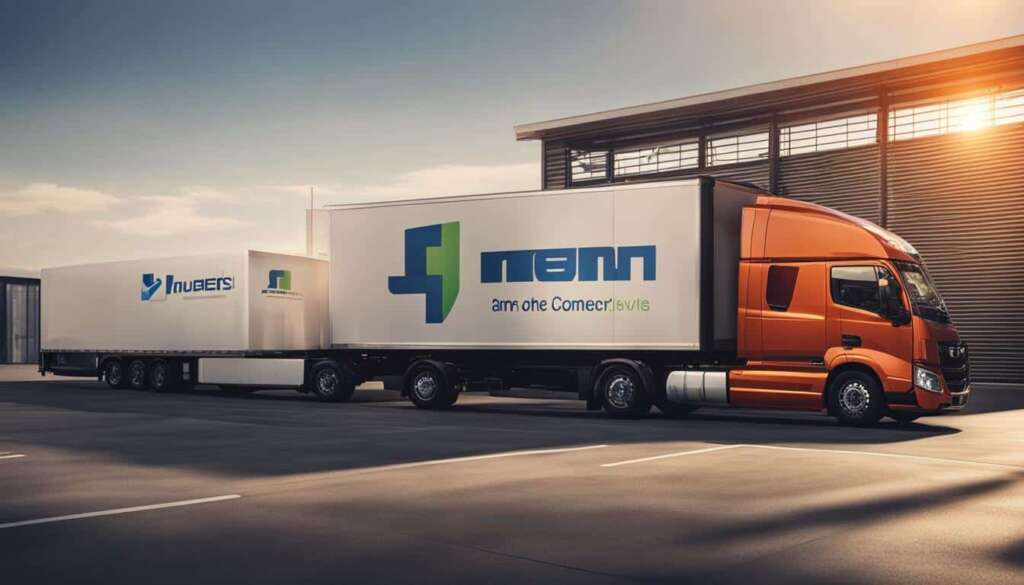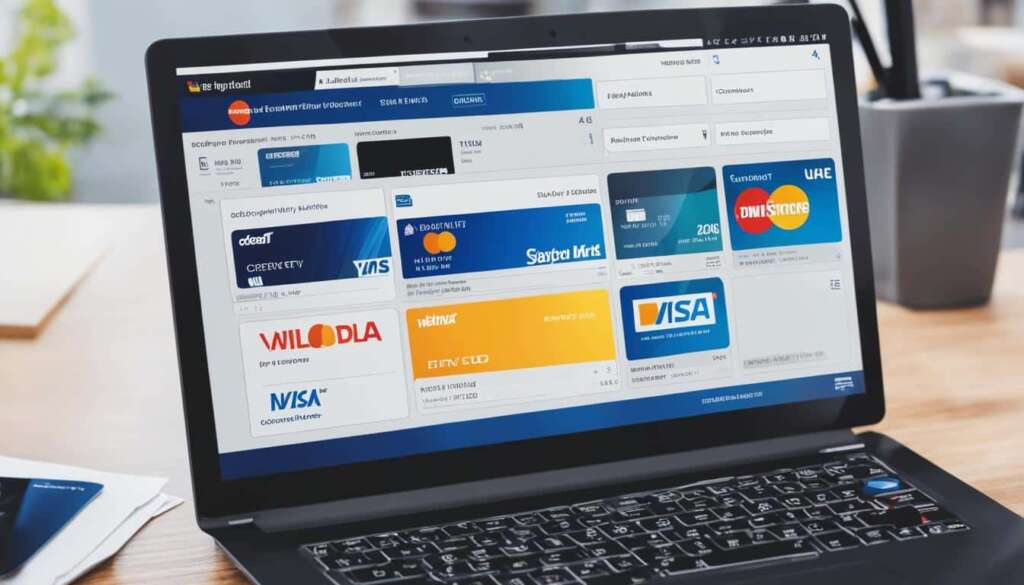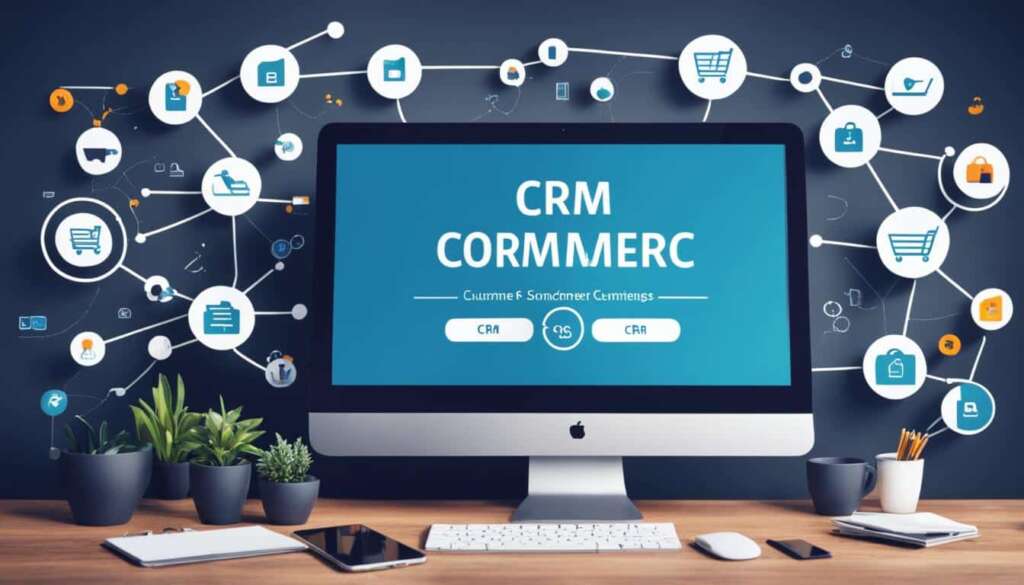Table of Contents
E-commerce has experienced rapid growth in recent years, with projections indicating that by 2025, 23% of all sales will be conducted online. As businesses strive to accommodate customer preferences and increase revenue, offering a variety of secure e-commerce payment methods has become crucial.
When it comes to e-commerce payment methods, there is a range of options available, each with its own benefits and considerations. From credit and debit cards to digital wallets, bank transfers to cash on delivery, businesses have multiple choices to cater to their customers’ diverse needs.
However, deciding which payment methods to offer can be a daunting task. Factors such as customer preferences, transaction fees, security measures, compatibility with e-commerce platforms, and the demographics of the target audience should all be taken into account.
In this article, we will explore the different types of e-commerce payment methods, provide insights on how to decide which ones to offer, and discuss the importance of secure payment options in driving customer satisfaction and business growth.
Let’s dive in and discover the secure e-commerce payment methods that can propel your business forward.
What is E-commerce?
E-commerce, or electronic commerce, refers to the buying and selling of goods and services over the internet. It has transformed the way businesses operate, providing opportunities for companies of all sizes to reach a wider audience and operate on a global scale.
E-commerce encompasses various online transactions, including online shopping, electronic payments, B2B sales, subscriptions, online auctions, and more. It offers advantages such as 24/7 availability, global reach, and lower operating costs.
Advantages of E-commerce
- Convenience: Online shopping allows customers to browse and purchase products at any time of the day, from the comfort of their own homes.
- Wider Reach: E-commerce enables businesses to reach customers globally, breaking down geographical barriers.
- Lower Operating Costs: In comparison to physical stores, online businesses often have lower overhead costs, including rent, utilities, and staffing.
- Personalization: E-commerce platforms can utilize customer data to offer personalized recommendations and targeted marketing campaigns.
There are different types of e-commerce models, each involving transactions between different entities:
| B2C (Business-to-Consumer) | B2B (Business-to-Business) |
|---|---|
| Transactions between businesses and individual consumers. | Transactions between businesses, such as wholesalers and retailers. |
| C2C (Consumer-to-Consumer) | C2B (Consumer-to-Business) |
| Transactions between individual consumers, such as through online marketplaces. | Transactions where consumers offer products or services to businesses. |
With the continuous growth of e-commerce, businesses need to adapt to this evolving landscape to stay competitive and meet the demands of online shoppers.
E-commerce has revolutionized the retail industry, providing consumers with a convenient way to shop and businesses with new avenues for growth.
Types of E-commerce Payment Methods
E-commerce payment methods have diversified as the industry has expanded. The most popular global payment methods include credit and debit cards, which allow customers to make quick and convenient payments. Digital wallets, such as PayPal, Apple Pay, and Google Pay, have also gained popularity for their secure and convenient payment options.
For customers who prefer bank transfers, this payment method is widely used, particularly in Europe and Asia. On the other hand, cash on delivery is common in countries with low credit and debit card usage.
Mobile payments are rapidly growing, especially in regions with high smartphone penetration. Customers can make payments simply by using their mobile devices.
Buy now pay later is an emerging payment option that allows customers to defer payment until a later date. This flexible payment method is gaining popularity among online shoppers.
Cryptocurrency, such as Bitcoin and Ethereum, is also being accepted by a growing number of online retailers. Customers can make payments using digital currency, providing an alternative payment option.
Prepaid cards function like debit cards and allow customers to pay for purchases using a specific amount of loaded money. They are a convenient and secure payment method for online shopping.
Comparison of E-commerce Payment Methods
| Payment Method | Advantages | Disadvantages |
|---|---|---|
| Credit and Debit Cards | Quick and convenient | Higher risk of fraud |
| Digital Wallets | Secure and convenient | May require additional setup |
| Bank Transfers | Widely used and accepted | Slower processing times |
| Cash on Delivery | No need for payment upfront | Potential for non-payment |
| Mobile Payments | Convenient and easy to use | Dependent on smartphone availability |
| Buy Now Pay Later | Flexibility in payment timing | Potential for higher interest rates |
| Cryptocurrency | Secure and anonymous | Limited acceptance |
| Prepaid Cards | Controlled spending | May have limited usability |
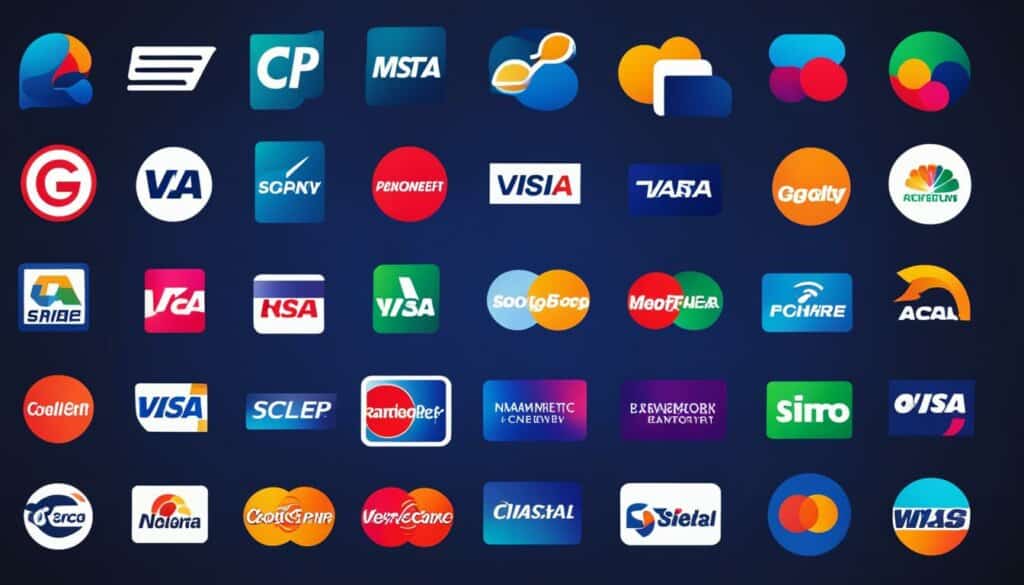
How to Decide Which E-commerce Payment Methods to Offer
When choosing which e-commerce payment methods to offer, businesses should consider several factors. Customer preferences and market standards should be taken into account by conducting market research to understand how customers prefer to pay and what payment methods competitors are offering. Transaction fees vary among payment methods and should be weighed against potential benefits such as increased conversion rates and customer satisfaction. Security and fraud prevention are key considerations, and businesses should opt for payment methods with robust security features. Compatibility with the e-commerce platform is crucial, as some payment methods may require additional integration work. Demographics of the target audience and the geographical location of customers should also be considered, as payment preferences can vary across different markets.
Customer preferences play a significant role in determining the payment methods businesses should offer. By understanding how customers prefer to pay, businesses can provide a seamless and convenient checkout experience. Conducting market research can reveal valuable insights into customers’ payment habits and expectations. Businesses should also analyze the payment methods offered by competitors to stay competitive in the market.
Market research is crucial in understanding customer preferences and market standards. By analyzing customer data and studying competitors, businesses can make informed decisions about the payment methods to offer.
Transaction fees are another essential factor to consider when choosing e-commerce payment methods. Different payment methods may have varying transaction fees, and businesses should evaluate these costs against potential benefits. While some payment methods may have higher transaction fees, they might offer increased conversion rates or customer satisfaction, ultimately leading to higher revenue. Careful consideration of transaction costs is necessary to optimize profitability.
Security and fraud prevention should be top priorities when selecting e-commerce payment methods. Businesses should prioritize payment methods with robust security features to protect both their customers’ sensitive information and their own reputation. Implementing technologies such as tokenization and encryption can enhance the security of transactions and provide customers with peace of mind.
Compatibility with the e-commerce platform is crucial for a smooth and efficient payment process. Some payment methods may require additional integration work, and businesses should assess the compatibility of their e-commerce platform with different payment options. Seamless integration ensures that customers can complete transactions without any technical difficulties, leading to a better user experience.
Demographics of the target audience and the geographical location of customers should also be taken into account. Payment preferences can vary across different markets, and businesses should offer payment methods that cater to the needs and habits of their specific target audience. For example, in regions with low credit and debit card usage, cash on delivery may be a popular payment method.
Key Considerations:
- Customer preferences and market standards
- Transaction fees and potential benefits
- Security and fraud prevention
- Compatibility with the e-commerce platform
- Demographics of the target audience
- Geographical location of customers
By carefully evaluating these factors, businesses can make informed decisions about the e-commerce payment methods they offer. This ensures a seamless and secure checkout experience that aligns with customer preferences and provides a competitive edge in the market.
Comparison of E-commerce Payment Methods
| Payment Method | Transaction Fees | Security Features | Compatibility | Geographical Usage |
|---|---|---|---|---|
| Credit and Debit Cards | Varies | Robust | Universal | Global |
| Digital Wallets | Varies | Secure authentication | Platform-dependent | Global |
| Bank Transfers | Varies | Encryption | Platform-dependent | Regional |
| Cash on Delivery | Varies | N/A | Platform-dependent | Regional |
| Mobile Payments | Varies | Secure authentication | Platform-dependent | Global |
| Buy Now Pay Later | Varies | Secure authentication | Platform-dependent | Global |
| Cryptocurrency | Varies | Blockchain encryption | Platform-dependent | Global |
| Prepaid Cards | Varies | Secure authentication | Universal | Global |
It is crucial for businesses to carefully analyze these payment methods and their characteristics, taking into consideration the factors discussed above. By offering a diverse range of payment options that align with customer preferences and market trends, businesses can provide a seamless and secure checkout experience, ultimately driving customer satisfaction and revenue growth.
Spotlight on Growth: 2023 Retail Industry Trends
The retail industry is experiencing a significant surge in growth, particularly in the e-commerce sector. With the increasing popularity of online shopping, businesses need to stay informed about the latest trends and developments to remain competitive in this evolving landscape. Embracing secure e-commerce payment methods is key to enhancing the overall customer experience and driving growth in this digital era.
As more consumers shift towards online shopping, it is essential for businesses to adapt and provide a seamless and secure payment experience. By offering multiple and secure payment options, businesses can cater to diverse customer preferences and increase their chances of conversion. This includes accepting credit and debit card payments, integrating digital wallets, facilitating bank transfers, and implementing other emerging payment technologies.
To give you a deeper understanding of the retail industry trends in 2023, here are some key insights:
- E-commerce Growth: E-commerce is expected to continue its upward trajectory, with sustained growth projected for the coming years. As the pandemic has accelerated the shift to online shopping, businesses should focus on optimizing their e-commerce platforms and payment systems to capture this growing market.
- Mobile Shopping: Mobile shopping is on the rise, with an increasing number of consumers using their smartphones or tablets to make purchases. Ensuring that your e-commerce website and payment gateway are fully optimized for mobile devices is crucial for providing a seamless experience to mobile shoppers.
- Omnichannel Integration: The integration of online and offline channels is becoming more prevalent in the retail industry. Businesses should leverage technologies that enable a seamless shopping experience across multiple channels, such as offering click-and-collect options or allowing customers to return online purchases in-store.
- Personalization: The demand for personalized shopping experiences continues to grow. By utilizing data and implementing AI-driven algorithms, businesses can personalize product recommendations, offers, and the overall shopping journey, increasing customer engagement and loyalty.
By staying informed about these trends and investing in secure e-commerce payment methods, businesses can position themselves for success in the evolving retail landscape and capitalize on the growth opportunities presented by the digital era.
| Trend | Key Insights |
|---|---|
| E-commerce Growth | The e-commerce sector is expected to experience sustained growth, driven by changing consumer behavior and increased adoption of online shopping. |
| Mobile Shopping | More consumers are using their mobile devices for online shopping, highlighting the importance of mobile optimization for e-commerce businesses. |
| Omnichannel Integration | The integration of online and offline channels provides customers with a seamless and convenient shopping experience, driving customer satisfaction and loyalty. |
| Personalization | Personalized shopping experiences, driven by AI and data, are becoming increasingly important for attracting and retaining customers. |
Note: The table above summarizes the key insights from the 2023 retail industry trends.
E-commerce Checkout Best Practices
Implementing best practices for e-commerce checkout is crucial for ensuring a secure and user-friendly payment experience. By following these recommendations, businesses can optimize their e-commerce checkout process and increase customer satisfaction and conversion rates.
Offer a Variety of Secure Payment Methods
To cater to customer preferences and improve conversion rates, it is important to provide a range of secure payment methods. This includes popular options such as credit and debit cards, digital wallets, bank transfers, and mobile payments. By offering multiple choices, businesses can accommodate different customer needs and increase the likelihood of successful transactions.
Streamline the Checkout Process
The checkout process should be streamlined with minimal steps and clear instructions. Customers appreciate a simple and efficient experience that allows them to complete their purchase quickly. Avoid unnecessary form fields or cumbersome requirements that may cause frustration or lead to cart abandonment.
Display Trust Badges and Security Seals
Providing reassurance to customers is crucial for building trust and instilling confidence in the payment process. Display trust badges and security seals prominently on the checkout page to demonstrate that the payment process is secure. These visual cues can help alleviate any concerns customers may have about sharing their sensitive payment information.
Implement Secure Payment Processing Technologies
Utilize secure payment processing technologies to protect customer data and prevent unauthorized access. Implementing SSL (Secure Sockets Layer) encryption ensures that data transmitted during the checkout process is encrypted and secure. Additionally, use tokenization to securely store customer payment information, reducing the risk of data breaches.
Offer Guest Checkout Options
Providing a guest checkout option allows customers to make a purchase without creating an account. Some users prefer this convenience to avoid the hassle of filling out registration forms. Offering a guest checkout option can help increase conversion rates and reduce cart abandonment.
Save Customer Information Securely
For customers who prefer to create an account, offer the option to save their information securely. This allows returning customers to have a faster and more convenient checkout experience in the future. Ensure that customer data is stored securely and in compliance with data protection regulations.
Provide Multiple Currency and Language Options
To cater to a global audience, offer multiple currency and language options at the checkout stage. This eliminates barriers for international customers and enhances their shopping experience. Providing local currency options and language support demonstrates a commitment to inclusivity and can improve customer satisfaction.
Table: Comparison of E-commerce Checkout Best Practices
| Benefits | |
|---|---|
| Offer a Variety of Secure Payment Methods | Enhanced customer satisfaction, increased conversion rates |
| Streamline the Checkout Process | Reduced cart abandonment, improved efficiency |
| Display Trust Badges and Security Seals | Build trust, reassure customers, increase confidence |
| Implement Secure Payment Processing Technologies | Data protection, prevention of unauthorized access |
| Offer Guest Checkout Options | Reduced friction, increased conversion rates |
| Save Customer Information Securely | Convenience for returning customers, streamlining future purchases |
| Provide Multiple Currency and Language Options | Inclusivity, improved customer experience for international shoppers |
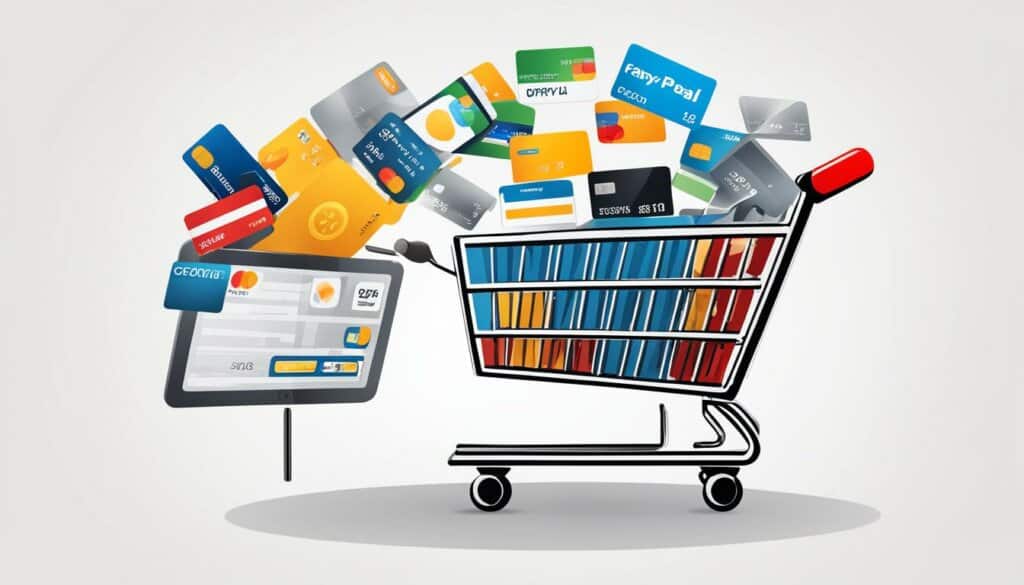
Insights to Scale Your SaaS Business
For software as a service (SaaS) businesses, having secure and reliable payment methods is crucial for scaling and growth. As a SaaS business, you need to consider offering various payment options to cater to different customer preferences and expand your customer base. By diversifying your payment methods, you can attract a wider audience and increase your revenue potential.
Implementing recurring billing for subscription-based services is a recommended strategy for SaaS businesses. This approach provides convenience for your customers and ensures a steady flow of revenue for your business. By offering subscription-based services with automated recurring payments, you can streamline your payment process and create a seamless experience for your customers.
Integration with secure payment gateways is another essential consideration for SaaS businesses. Collaborating with reputable payment partners ensures the security and reliability of your payment transactions, protecting both your business and your customers’ sensitive data. Implementing robust fraud prevention measures further strengthens the security of your payment processing system.
By prioritizing a seamless and secure payment experience, you can build trust with your customers. Trust is essential for establishing long-term relationships and driving sustained growth for your SaaS business. When customers feel confident and secure in their transactions, they are more likely to become repeat customers and advocate for your services.
To help illustrate the importance of diverse payment options for SaaS businesses, here’s a table showcasing the potential advantages of offering different payment methods:
| Payment Method | Advantages |
|---|---|
| Credit and Debit Cards | Convenient for customers, quick transaction processing |
| Digital Wallets | Secure and convenient payment options |
| Bank Transfers | Widely used, particularly in Europe and Asia |
| Cryptocurrency | Appeals to tech-savvy customers, potential for global reach |
By considering these insights and implementing a diverse range of payment options, your SaaS business can accelerate its scaling efforts, attract more customers, and ensure a secure and seamless payment experience. Remember, a strong payment infrastructure is the foundation for long-term growth in the SaaS industry.
Conclusion
In conclusion, secure online payment methods play a vital role in enhancing the e-commerce experience, driving business growth, and ensuring customer satisfaction. By offering a diverse range of payment options that align with customer preferences and industry standards, businesses can effectively cater to a broader audience and improve conversion rates. Prioritizing security and implementing fraud prevention measures is crucial to safeguard both the business and customers’ sensitive data.
Seamless integration of secure payment methods with the e-commerce platform, coupled with a user-friendly checkout process, further enhances the customer experience and encourages repeat purchases. Staying informed about the latest trends and best practices in the retail industry enables businesses to optimize their e-commerce payment methods and remain competitive in the ever-growing online market.
By providing secure online payment methods, businesses not only inspire trust and confidence in their customers but also create a seamless and convenient shopping experience. This, in turn, fosters customer loyalty and encourages them to recommend the brand to others. As e-commerce continues to expand and shape the retail landscape, businesses that prioritize secure payment methods will be well-positioned to capitalize on the growth opportunities and thrive in the dynamic digital marketplace.
FAQ
What are e-commerce payment methods?
E-commerce payment methods refer to the various options available for customers to make payments when buying goods and services online.
What are the popular e-commerce payment methods?
Popular e-commerce payment methods include credit and debit cards, digital wallets, bank transfers, cash on delivery, mobile payments, buy now pay later, cryptocurrency, and prepaid cards.
How do I decide which e-commerce payment methods to offer?
When deciding which e-commerce payment methods to offer, consider factors such as customer preferences, transaction fees, security measures, compatibility with your e-commerce platform, demographics of your target audience, and the geographical location of your customers.
What are the trends in the retail industry for 2023?
The retail industry is experiencing significant growth, particularly in the e-commerce sector. To stay competitive, businesses need to stay informed about the latest trends and developments in the industry.
What are the best practices for e-commerce checkout?
Best practices for e-commerce checkout include offering a variety of secure payment methods, streamlining the checkout process, displaying trust badges and security seals, implementing secure payment processing technologies, and providing guest checkout options.
How can I scale my SaaS business with secure payment methods?
To scale your SaaS business, offer various payment options to cater to customers’ preferences, implement recurring billing for subscription-based services, integrate with secure payment gateways, and prioritize fraud prevention measures.
Why are secure e-commerce payment methods important?
Secure e-commerce payment methods are important to enhance the online shopping experience, boost customer satisfaction, and drive revenue growth. They also help protect the business and customers’ data from security threats.




